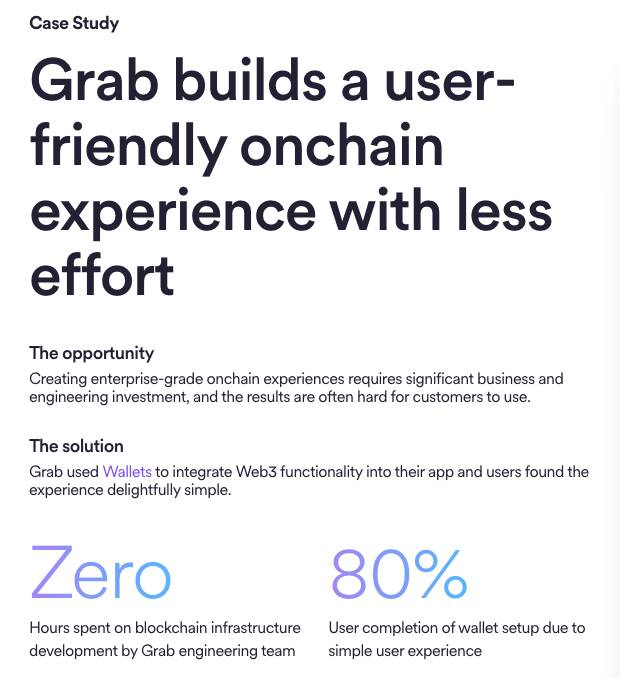Southeast Asia’s popular superapp, Grab, has taken a significant step into the realm of blockchain and autonomous driving technology through a new partnership with Natix, a component of Solana’s decentralized physical infrastructure. The collaboration aims to merge Natix’s innovative blockchain-based mapping data with Grab’s advanced camera hardware and artificial intelligence capabilities. This alliance, announced on May 6, is geared towards enhancing the way mapping and real-time data is gathered for navigation systems.
“This partnership brings together the best of both worlds,” noted Natix in their announcement, highlighting Grab’s expertise in crowdsourced mapping along with Natix’s unique DePIN model, which incentivizes users for providing decentralized data. Grab’s mapping service, GrabMaps, elaborated on this integration, stating that the combination of AI-powered mapping and decentralized data networks will facilitate high-fidelity map updates globally.
“By combining GrabMaps’ AI-powered mapping technology with Natix’s decentralized data network, we’re enabling real-time, high-fidelity map updates across the globe,” GrabMaps posted on LinkedIn.
As part of their collaboration, Natix is introducing VX360, a device employing Grab’s hardware to allow Tesla drivers to collect and share 360-degree imagery. This kind of detailed visual data is essential for generating more accurate maps and supports the training of AI models used in autonomous vehicle technology.
According to Alireza Ghods, co-founder and CEO of Natix, traditional mapping methods like Google Street View are often costly and inefficient, limiting coverage and update frequency. Natix aims to address these challenges with a unique on-street camera network that utilizes crowdsourced contributions to gather real-time data at a significantly lower cost than traditional methods. Ghods emphasized the advantages of a blockchain-based incentivization system in enhancing data frequency and coverage.
“We’re giving Tesla drivers access and storage for their vehicle’s camera feed—while earning rewards for contributing 360° imagery that will be used for better mapping solutions and to power physical AI,” Natix explained.
This partnership is part of Grab’s ongoing commitment to blockchain and cryptocurrency initiatives, as the company continues to explore diverse offerings within this growing sector. Earlier this year, Grab had also partnered with the payments firm Triple-A to facilitate cryptocurrency payments for its services, showcasing an ambitious strategy fueled by significant backing from SoftBank, known for its strong interest in crypto and AI advancements. Amid these developments, Grab recently reported impressive earnings of $773 million for the first quarter of 2025, marking an 18% increase from the previous year.
Grab Partners with Natix for Advanced Mapping and Autonomous Driving Technologies
The collaboration between Grab and Natix brings significant advancements in mapping technologies and autonomous driving, which could have far-reaching impacts on various users, particularly those reliant on transportation technologies.
- Partnership Announcement:
Grab has officially partnered with Natix, a project within Solana’s decentralized physical infrastructure network (DePIN), to innovate in mapping and autonomous vehicle technologies.
- Utilization of AI in Mapping:
The collaboration integrates Natix’s blockchain-based mapping data with Grab’s AI-driven camera and mapmaking technologies, aiming for real-time map updates.
- Real-time Mapping Enhancements:
Through this partnership, users can expect high-fidelity map updates globally, enhancing navigation and transportation services.
- VX360 Device for Tesla Drivers:
A new device called VX360 will enable Tesla drivers to collect 360° imagery, enriching the mapping data and aiding in future autonomous driving applications.
- Crowdsourced Mapping Efficiency:
Natix aims to improve mapping efficiency and coverage by incorporating real-time crowd data with significantly reduced costs compared to traditional methods like Google Street View.
- Blockchain Incentives:
Unlike proprietary data systems, Natix’s blockchain incentivization approach encourages more user participation for better mapping accuracy and coverage.
- Collaboration with Other Mapping Tech Firms:
GrabMaps has also partnered with multiple players in the mapping space, including Loqate and Bing Maps, showcasing its commitment to enhance hyperlocal location services.
- Grab’s Growing Interest in Blockchain:
This partnership is part of Grab’s broader strategy to adopt blockchain and cryptocurrency solutions, potentially offering users new payment options and increased service efficiency.
- Backed by Major Investment Firms:
Grab’s initiatives are supported by SoftBank, suggesting a robust backing for ongoing innovation in the tech and crypto space.
“By combining GrabMaps’ AI-powered mapping technology with Natix’s decentralized data network, we’re enabling real-time, high-fidelity map updates across the globe.” – Grab
Overall, the advances in mapping and autonomous driving technologies have the potential to significantly enhance transportation efficiency and could empower users with innovative tools and services that improve their daily commuting experiences.
Grab and Natix: A Revolutionary Partnership in Mapping Technology
The partnership between Grab and Natix represents a significant leap forward in the realm of mapping and autonomous driving technologies. This collaboration fuses Grab’s advanced AI-driven map-making capabilities with Natix’s decentralized infrastructure, positioning both companies in a unique space that could reshape how mapping data is collected and utilized. While this union has its competitive advantages, a thorough analysis reveals a landscape filled with both exciting opportunities and potential challenges.
Competitive Advantages: One of the most compelling features of this partnership is the introduction of a decentralized model that provides real-time, high-fidelity map updates, thanks to a blockchain-based incentivization system. This model stands in stark contrast to traditional systems, like Google Street View, which often rely on expensive, centralized data collection methods. By harnessing the power of crowdsourcing, Grab and Natix can foster an expansive network of user-generated data, thus enhancing coverage and update frequency. For consumers and businesses, this promises fresher and more reliable data, improving navigation and potentially saving costs in logistics and transportation.
Challenges and Disadvantages: However, the transition to this decentralized approach might not be seamless. Stakeholders in traditional mapping services may view this collaboration with skepticism, particularly concerning data quality and reliability. There’s also the challenge of user participation; while the incentive model is designed to motivate contributions, consistent user engagement is critical for success. If users fail to actively participate or if the rewards are deemed inadequate, the data pipeline could be hindered, adversely impacting the quality of map updates.
Who Could Benefit: Tech-savvy consumers, particularly Tesla drivers, stand to gain significantly from this development. With the introduction of the VX360 device, budding mappers will have the opportunity to earn rewards while contributing valuable data to the ecosystem. Furthermore, businesses relying on logistics and transportation services could see enhanced efficiency and accuracy in route planning, ultimately leading to cost savings. In the long run, as Grab expands its presence in the cryptocurrency space, users keen on blockchain innovations could find their interests well-aligned with the capabilities being developed through this partnership.
Who Might Face Problems: On the flip side, traditional mapping services such as Google and TomTom could face stiff competition. Their high-cost, centralized models may struggle against the low-cost, user-incentivized approach of Grab and Natix. Furthermore, the integration of AI and decentralized mapping might lead to regulatory scrutiny, particularly relating to data privacy and security concerns. Companies unprepared to adapt to this evolving landscape could find themselves at a severe disadvantage, while consumers accustomed to proprietary systems may take time to adjust to community-driven data collection methods.
The Grab-Natix collaboration not only showcases the potential of decentralized technologies but also highlights a pivotal shift in how mapping data could be generated and utilized moving forward. As this partnership unfolds, it will be intriguing to see how it influences the broader landscape of mapping and autonomous technology.

















